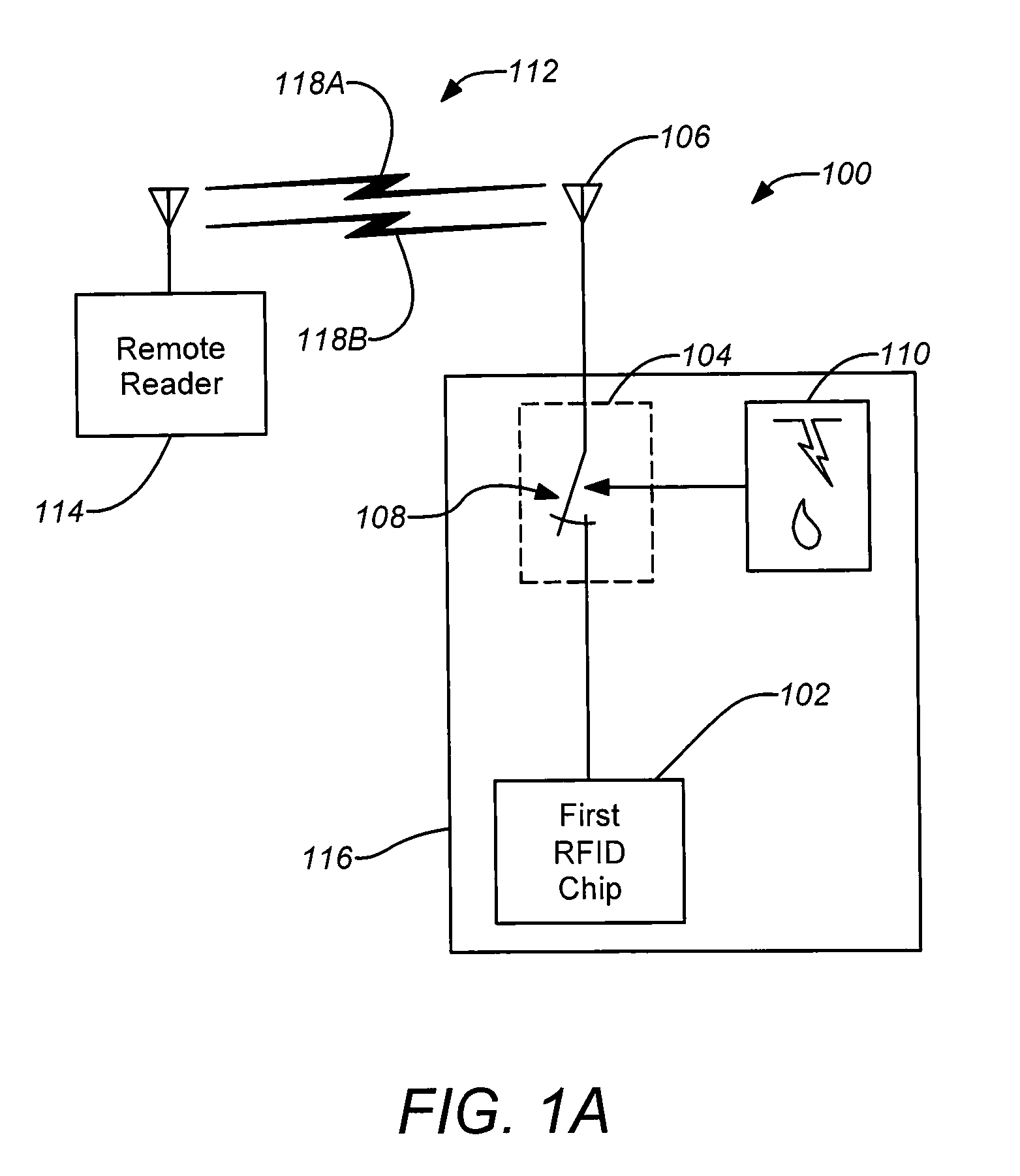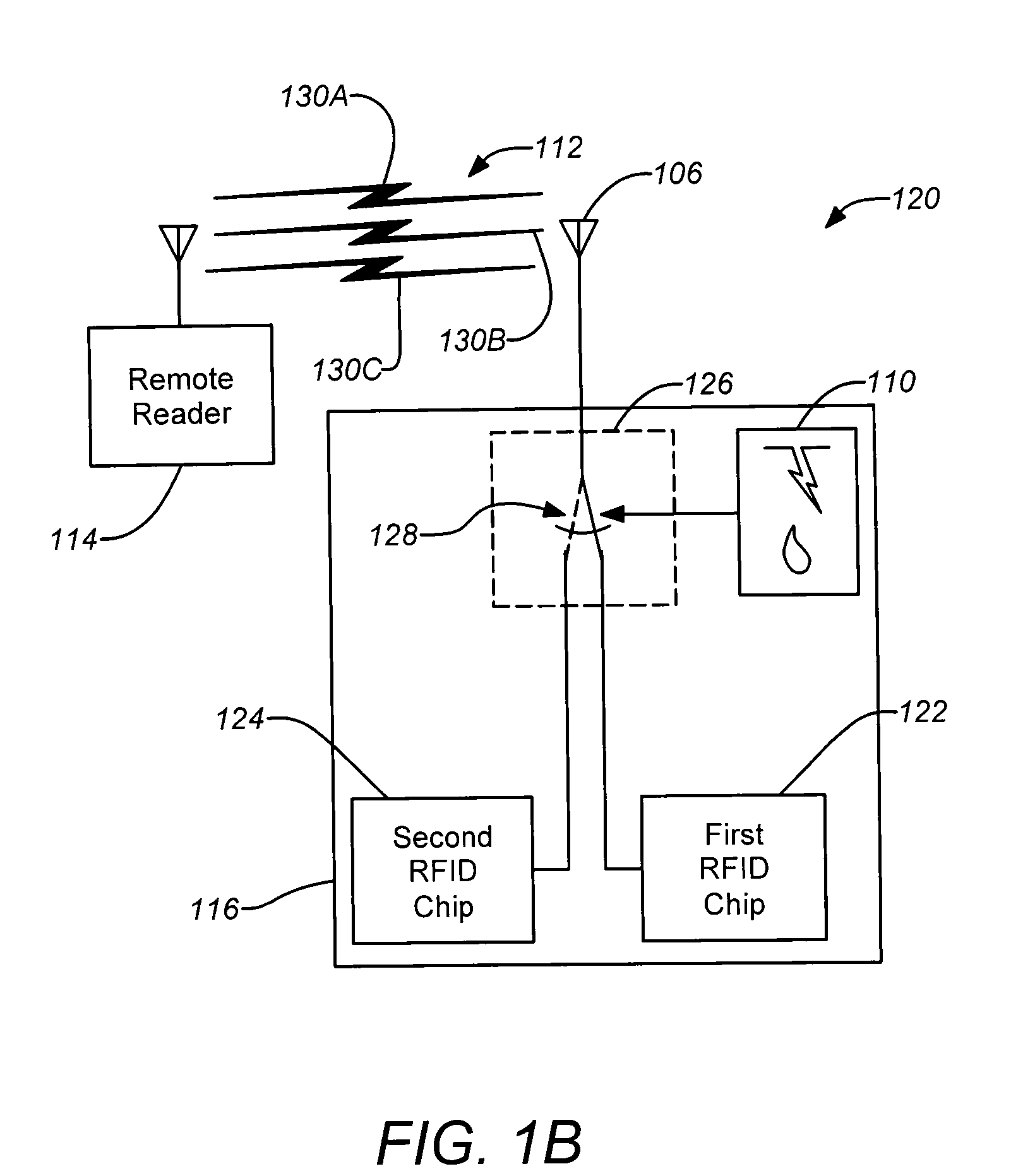Rfid-based corrosion and moisture detection
a technology of corrosion and moisture detection and rfid, applied in the direction of material strength using steady bending force, burglar alarm mechanical actuation, instruments, etc., can solve the problems of different failure modes, adds greatly to the overall testing cost, and requires regular visual inspection
- Summary
- Abstract
- Description
- Claims
- Application Information
AI Technical Summary
Benefits of technology
Problems solved by technology
Method used
Image
Examples
Embodiment Construction
[0031]1. Overview
[0032]Embodiments of the disclosure can automatically detect the presence of an environment conducive to corrosion, which can enable the replacement of time-consuming visual inspection procedures with a much simpler and quicker nonintrusive inspection. Embodiments of the disclosure can take advantage of known radio frequency identification (RFID) technology to yield a passive and wireless interface for a sensor system. Such a system can be particularly useful in corrosion monitoring of aircraft, although embodiments of the disclosure are not limited to such applications. In some embodiments of the disclosure, conventional RFID technology can be applied to create a binary detector, capable of sensing moisture. The RFID-based corrosion and moisture detection techniques herein may be more generally described as RFID-based environmental structural sensing techniques.
[0033]Embodiments of the disclosure can enable inspections which do not require direct access to the stru...
PUM
 Login to View More
Login to View More Abstract
Description
Claims
Application Information
 Login to View More
Login to View More - R&D
- Intellectual Property
- Life Sciences
- Materials
- Tech Scout
- Unparalleled Data Quality
- Higher Quality Content
- 60% Fewer Hallucinations
Browse by: Latest US Patents, China's latest patents, Technical Efficacy Thesaurus, Application Domain, Technology Topic, Popular Technical Reports.
© 2025 PatSnap. All rights reserved.Legal|Privacy policy|Modern Slavery Act Transparency Statement|Sitemap|About US| Contact US: help@patsnap.com



